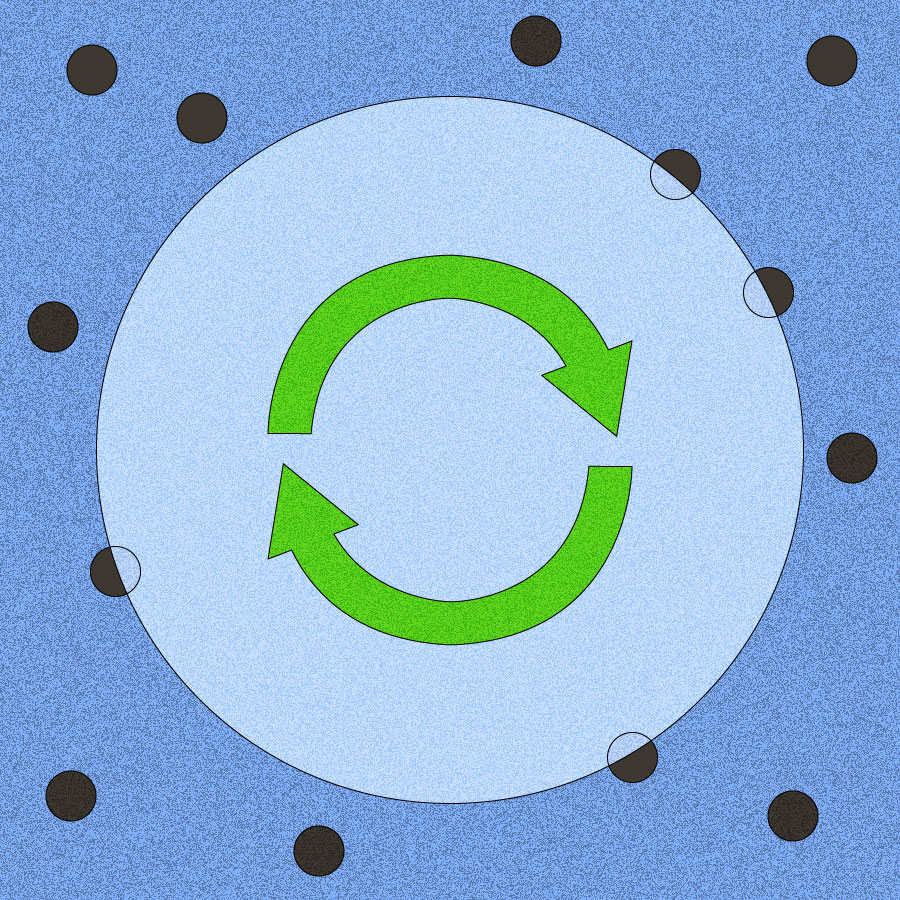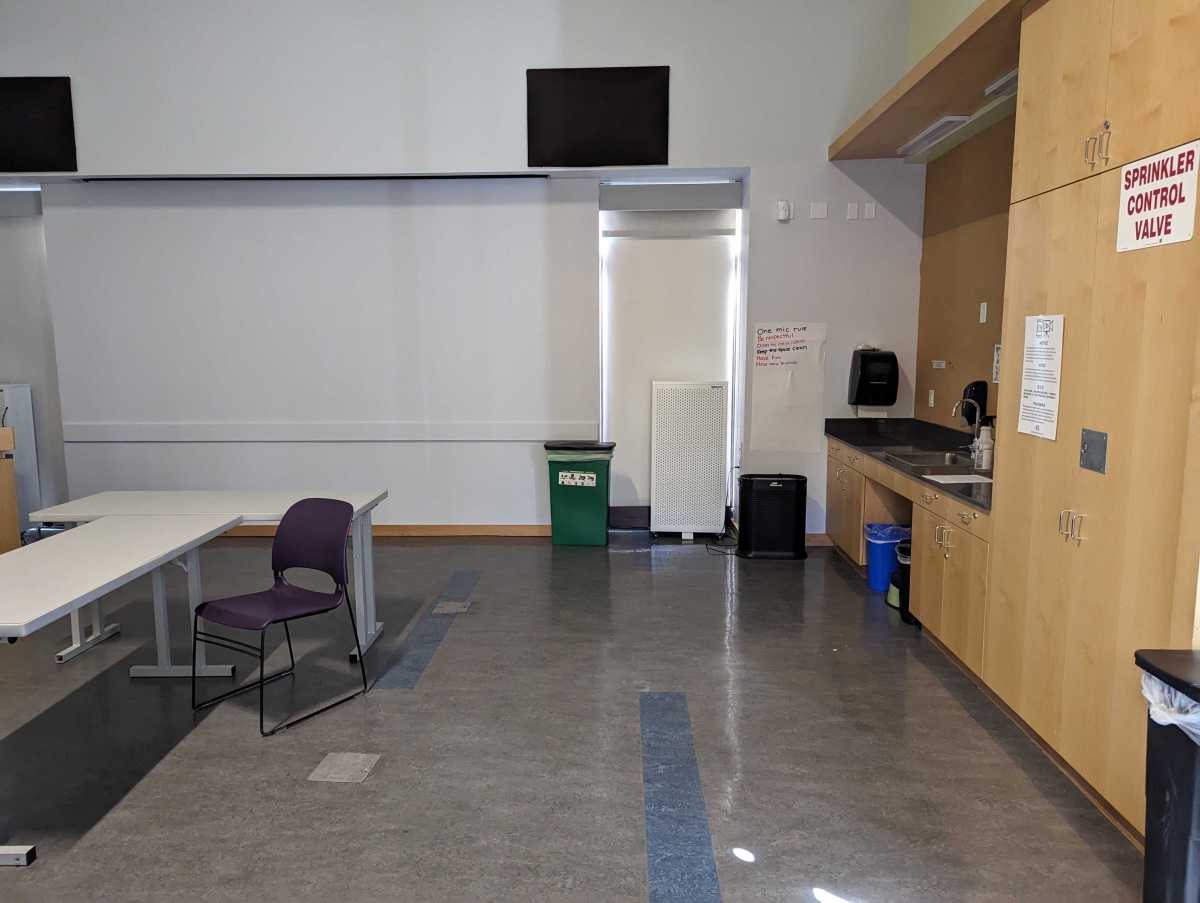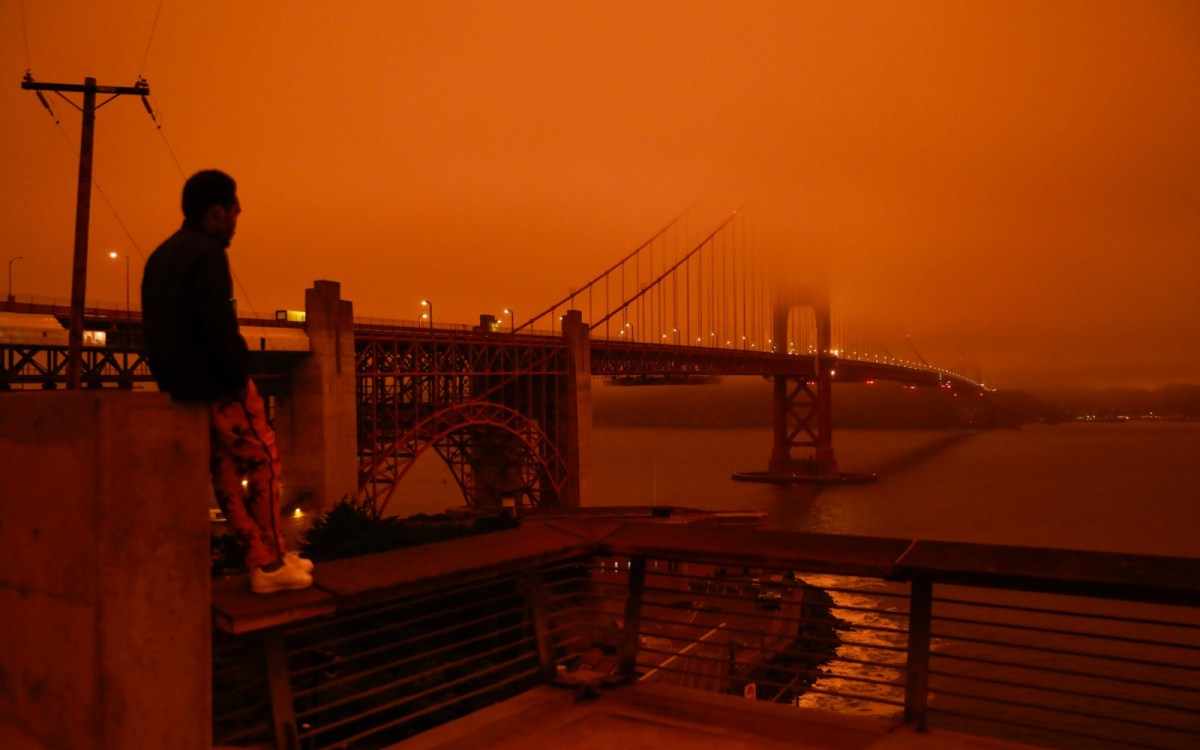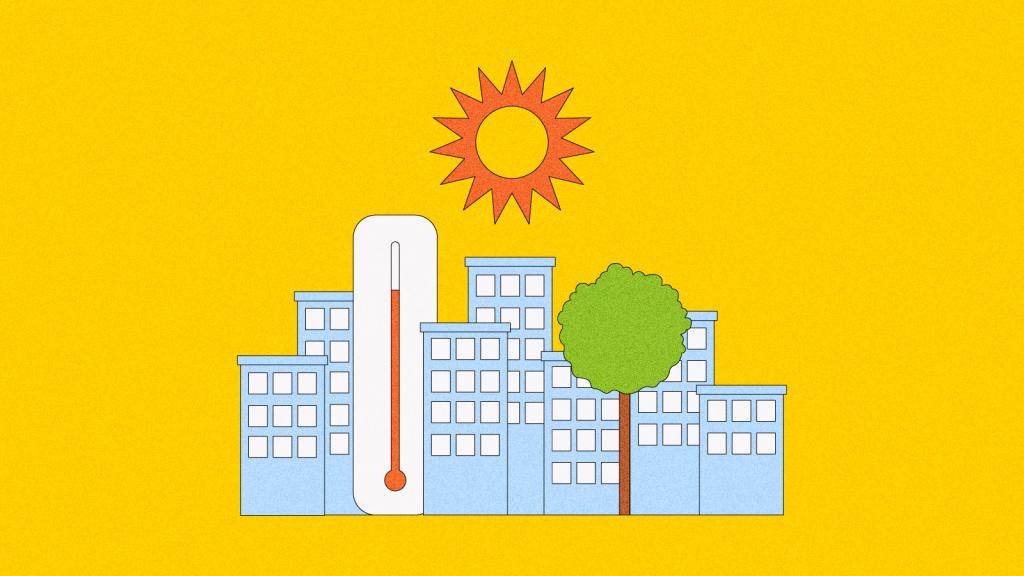
The vision
“We’re in emergency-management groups, and we share information all the time. New York just had really bad air quality, and New Jersey, and we actually provided some of the content from our air-quality messaging toolkit to them last month when they were going through that. They reached out and they were like, ‘California, we know you’ve done this before!’”
Adrienne Bechelli, deputy director for San Francisco’s Department of Emergency Management
The spotlight
A few weeks ago, while visiting friends in San Francisco, I stopped by the Linda Brooks-Burton Branch Library in the city’s Bayview Hunters Point neighborhood. Rather than checking out books, I was there to check out a room — a nondescript space with a few tables and chairs, a hand-washing station, and two quiet but impressive MERV 13 air filters.
The room is part of a new pilot program in California to establish cleaner-air centers as a response to wildfire smoke. The idea, akin to public cooling centers, is to upgrade air-filtration systems or provide portable air cleaners to community gathering spaces, creating indoor oases where residents can go to get respite from hazardous air.

A view of California’s first clean-air center at the Linda Brooks-Burton Branch Library. Claire Elise Thompson / Grist
This summer, Canadian wildfires have blanketed the East Coast and Midwest with smoke, as our northern neighbor faces its worst wildfire season to date. On one day, the Air Quality Index in New York City jumped to 480, earning it the temporary superlative of the worst air quality anywhere in the world. (The scale goes from 0 to 500; anything above 150 is considered unhealthy for everyone.)
While this was a shock to many in the Eastern U.S., wildfires and the air pollution they bring to surrounding areas have become increasingly familiar in the West, where some cities have begun piloting solutions to keep residents safe from the hazards of smoke and emergency response systems to deploy when conditions are bad.
In 2019, following two summers of particularly smoky skies, Seattle’s then-mayor Jenny Durkan announced plans to pilot clean-air shelters by deploying air-filtration systems in public buildings. The pilot focused on community spaces that already had air-conditioning systems that could be upgraded fairly easily to offer enhanced air filtration, also emphasizing locations that served vulnerable residents, like seniors.
“These are improvements that we’ve made to our existing community centers in order to ensure that they can be spaces where people can find respite during wildfire smoke events,” says Rachel Schulkin, public affairs manager for Seattle Parks & Recreation. The city currently has four cleaner-air centers — which may be a room or an entire wing in a community center — and is in the process of implementing nine more at community centers across the city, according to Schulkin.
In some cases, those upgrades are going hand-in-hand with a push to add air conditioning to Seattle’s public buildings. “The majority of our community centers were built without any kind of air-cooling system besides just windows being able to open,” says Schulkin — and the same is true of Seattle’s housing stock. “But our summers have gotten substantially warmer.”
San Francisco, which has claimed the title of the nation’s least air-conditioned city from Seattle, faces a similar problem. In both places, residents often rely on opening windows to keep cool inside. But when the Air Quality Index gets dangerously high, that poses a dilemma.
“A lot of the outreach and education that we have been doing has been around letting people know that, in a combined event, heat takes precedence,” says Adrienne Bechelli, deputy director for the San Francisco Department of Emergency Management. “Because heat is more likely to harm or potentially kill you quicker than exposure to poor air quality.”
When extreme conditions like heat waves or wildfires loom, the city makes use of an opt-in emergency alert system — as well as other outreach channels like social media, traditional media, and community partners — to communicate with residents about where they can go and how best to protect themselves.
San Francisco has made similar efforts to Seattle’s, upgrading HVAC systems in its public buildings to offer both air conditioning and air filtration. But the center at the Bayview library is different. It is the first launched as part of a statewide program that aims to create clean-air centers for vulnerable populations. Funded by a 2019 state bill setting aside $5 million for the effort, the goal is to create a network of clean-air centers across all of California, with a particular emphasis on locations that already bear a high burden of air pollution from everyday sources — like the Bayview, a formerly redlined neighborhood abutting an abandoned shipyard that is now a Superfund site.
The center at the Bayview library also prompted San Francisco to launch its own pilot, which will focus on smaller, community-serving locations — both public and privately owned spaces. The city’s program has received over 200 applications from community-based organizations. “That really does show the demand and the interest there,” Bechelli says. “Our ultimate goal is to have so many locations in all of these different categories so that where people already go on a daily basis, they can get that type of respite.” Although the city remains a long way from that goal, her team plans to announce the first group of locations for the citywide pilot program later this summer.
Seattle is eyeing similar efforts to develop resilience hubs at trusted community-owned locations that could offer cooling, air filtration, or other pressing climate adaptations. To date, the Emerald City’s cleaner-air centers have been modestly utilized. Rachel Schulkin estimates that each operational center has somewhere between two and 10 people who actually visit it when the air quality gets bad. “We’re attempting to provide more activities for people to do, which we think will hopefully make it more enticing for folks to come,” she says. For instance, at the Rainier Beach Community Center in the south of Seattle, the cleaner-air wing includes a gym — an appealing offering, considering that one of the primary safety recommendations is to avoid exercising outdoors on acutely smoky days.
According to Schulkin, Seattle is at a critical pivot point for providing access to both clean and cool air. Many of the city’s buildings, public and private, were built for a climate that no longer exists. It’s a challenge — but for her, it’s one of the most fascinating things about working on behalf of the public built environment. “You’re stewarding a system built by people who were alive long before you. And we have to create a system that’s going to last long after we’re gone.”
— Claire Elise Thompson
More exposure
- Read: about the compounding overlaps of polluted air and the housing crisis in cities (Grist)
- Read: about research into the unique health hazards posed by wildfire smoke (Science)
- Read: a profile of a California activist who distributes masks to vulnerable community members during wildfires (Grist and YR Media)
- Read: about the cultural evolution of American standards on ventilation in buildings (NYT)
- Read: advice on how to best protect yourself, at home and outdoors, during smoke events (Nat Geo)
- DIY: check out this blog post about how to build a low-cost air filter with the help of a box fan (Science Northwest)
See for yourself
With increasingly unpredictable (and scary) weather, some people (myself included!) have become addicted to checking weather apps. What about you, dear reader? How attuned are you to the forecast, or the Air Quality Index, where you live? Do you plan on taking extra precautions on hot days, or smoky days, or other types of days?
Reply to this email to let me know.
A parting shot
Anyone who was in San Francisco on September 9, 2020, will remember Orange Day — an orange haze over the city that was caused by a number of wildfires burning around the area. One op-ed referred to it as “the day the climate crisis came home.”




